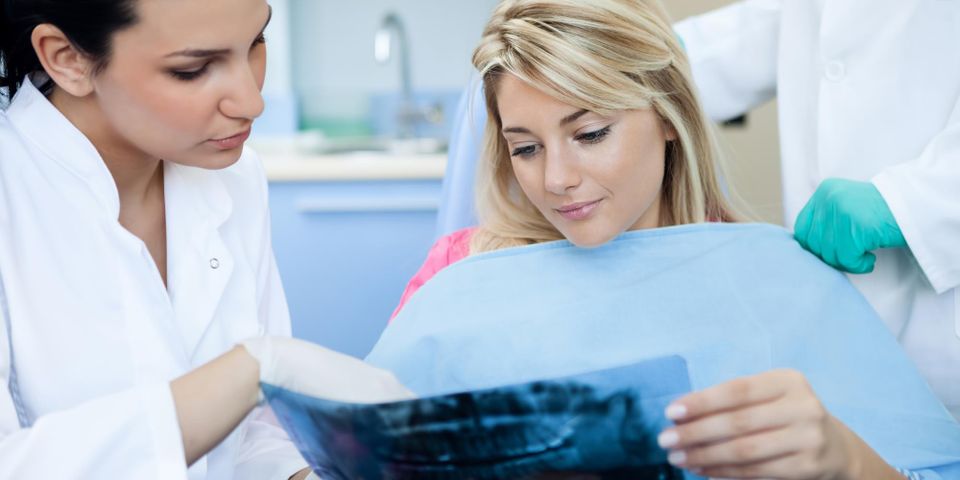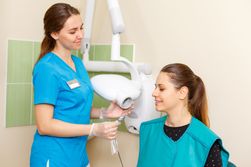
Dental X-rays are one of the best resources orthodontists have at their disposal. Detailed interior images of your teeth and gums are generated by using low radiation levels to provide doctors with the means to prevent or treat common conditions like tooth decay, abscesses, cavities, and impacted teeth. Depending on several factors, you may need different types of X-rays.
What Are the Types of Dental X-Rays?
There are two types of dental X-rays: intraoral, where the X-ray film is inside your mouth) and extraoral, where it’s outside your mouth.
Intraoral X-rays are the most common, as they’re used by orthodontists to detect cavities, test tooth density, and inspect the health of the roots and the surrounding bone. In children, these X-rays are used to monitor the status of developing teeth.
Extraoral X-rays are used to find impacted teeth or issues between the teeth and the upper and lower jaw, such as temporomandibular disorders (TMD). The disorders can be caused by injuries to the jaw, the joint, or the head and neck muscles. They can also be caused by stress, arthritis, and teeth grinding. A TMD often results in swelling, discomfort, and difficulty chewing. If your orthodontist detects one through an extraoral X-ray, they will provide solutions. They may include medication, night guards, or electrical stimulation to relieve discomfort and improve jaw mobility.
What Happens During a Dental X-Ray?
Dental X-rays are simple and require little preparation. You only have to brush your teeth before the appointment, as you would prior to a bi-annual cleaning.
 Once sitting on the dental chair, your orthodontist will ask if you’d prefer to wear a lead apron over your chest and lap. Historically, the apron was used to prevent unnecessary radiation exposure. As technology has developed, the X-rays are less scattered and more precise, making the aprons optional. Most people choose to use them to relieve any anxiety they may have about radiation exposure.
Once sitting on the dental chair, your orthodontist will ask if you’d prefer to wear a lead apron over your chest and lap. Historically, the apron was used to prevent unnecessary radiation exposure. As technology has developed, the X-rays are less scattered and more precise, making the aprons optional. Most people choose to use them to relieve any anxiety they may have about radiation exposure.
Depending on the orthodontist’s setup, they may have a separate room for X-rays, or they’ll have one available in the same room as your cleaning.
Advances in digital imaging technology allow for the X-ray pictures to be ready instantaneously. Together, you and your orthodontist will review the results. If there are abnormalities, they’ll treat them there in the office or schedule a follow-up appointment. The doctor will also provide prevention advice, so issues are less likely to reoccur in the future.
An orthodontist should take X-rays of your teeth once a year to diagnose and treat potential issues before they can cause discomfort. Using only the most advanced technology, Magnolia Dental in Waynesboro, VA, has provided comprehensive dentistry in a welcoming environment for many years. They also offer block scheduling for large families, so everyone can receive the care they need without taking multiple trips. For more information on their services, visit their website. To schedule an appointment, call (540) 943-2723.
About the Business
Have a question? Ask the experts!
Send your question

